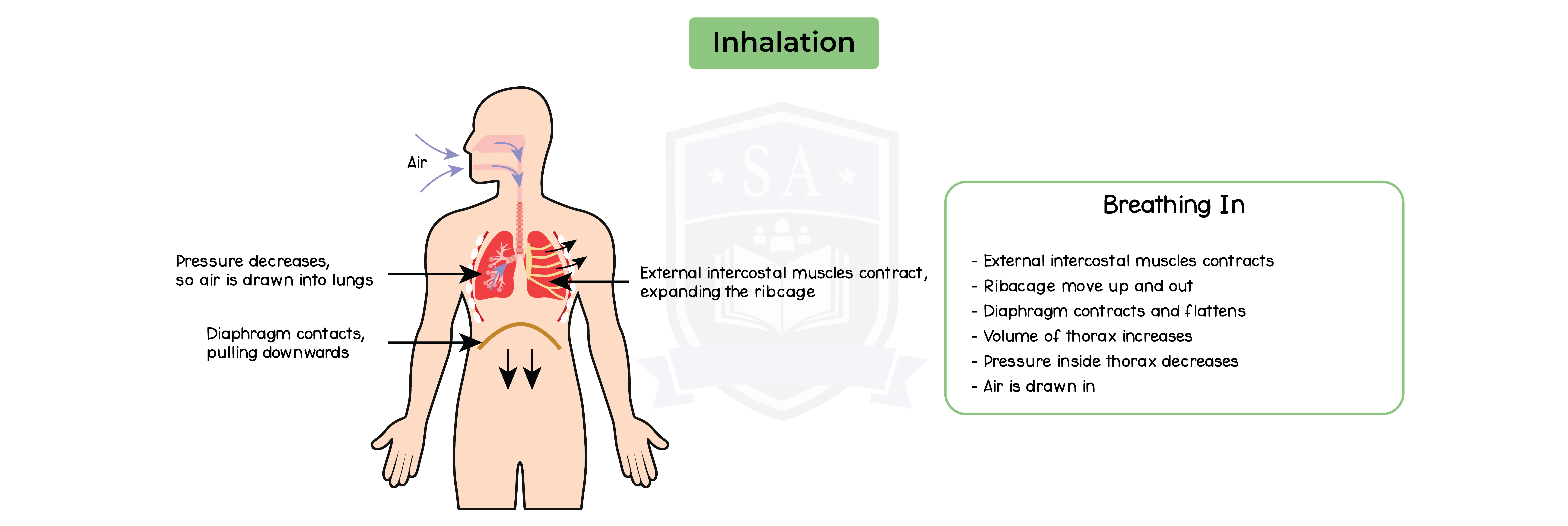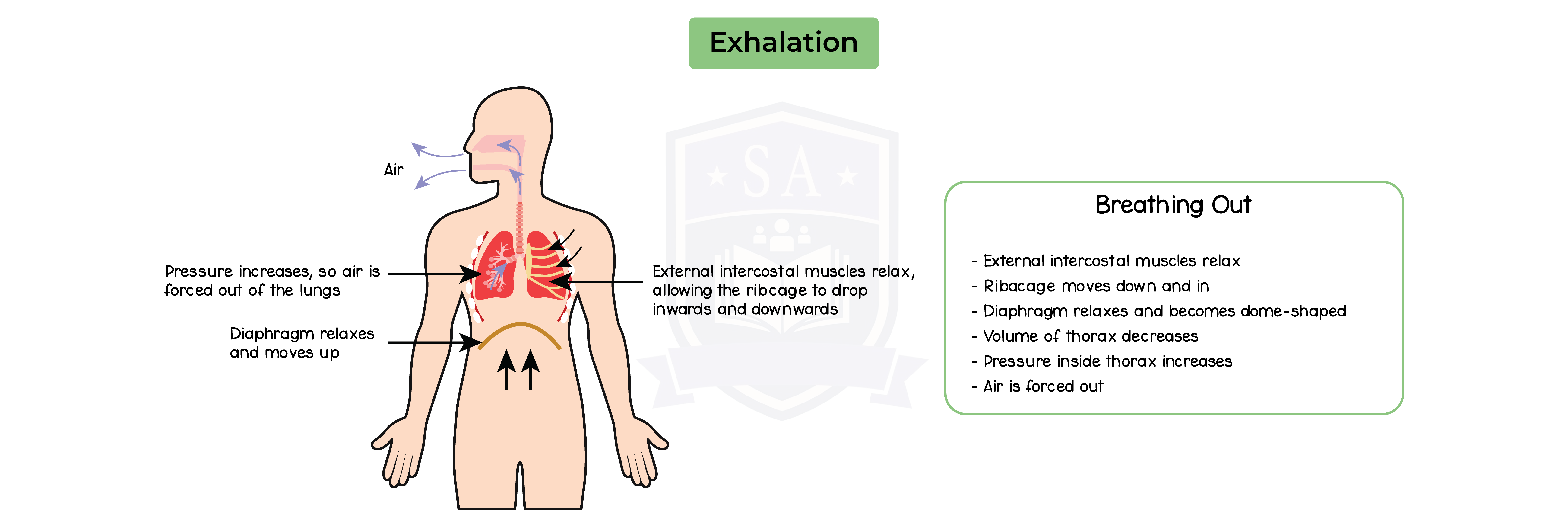REVISION NOTES
IGCSE Edexcel Biology
2.9 Gas Exchange (in Human)
2.9.1 Describe the structure of the thorax, including the ribs, intercostal muscles, diaphragm, trachea, bronchi, bronchioles, alveoli and pleural membranes
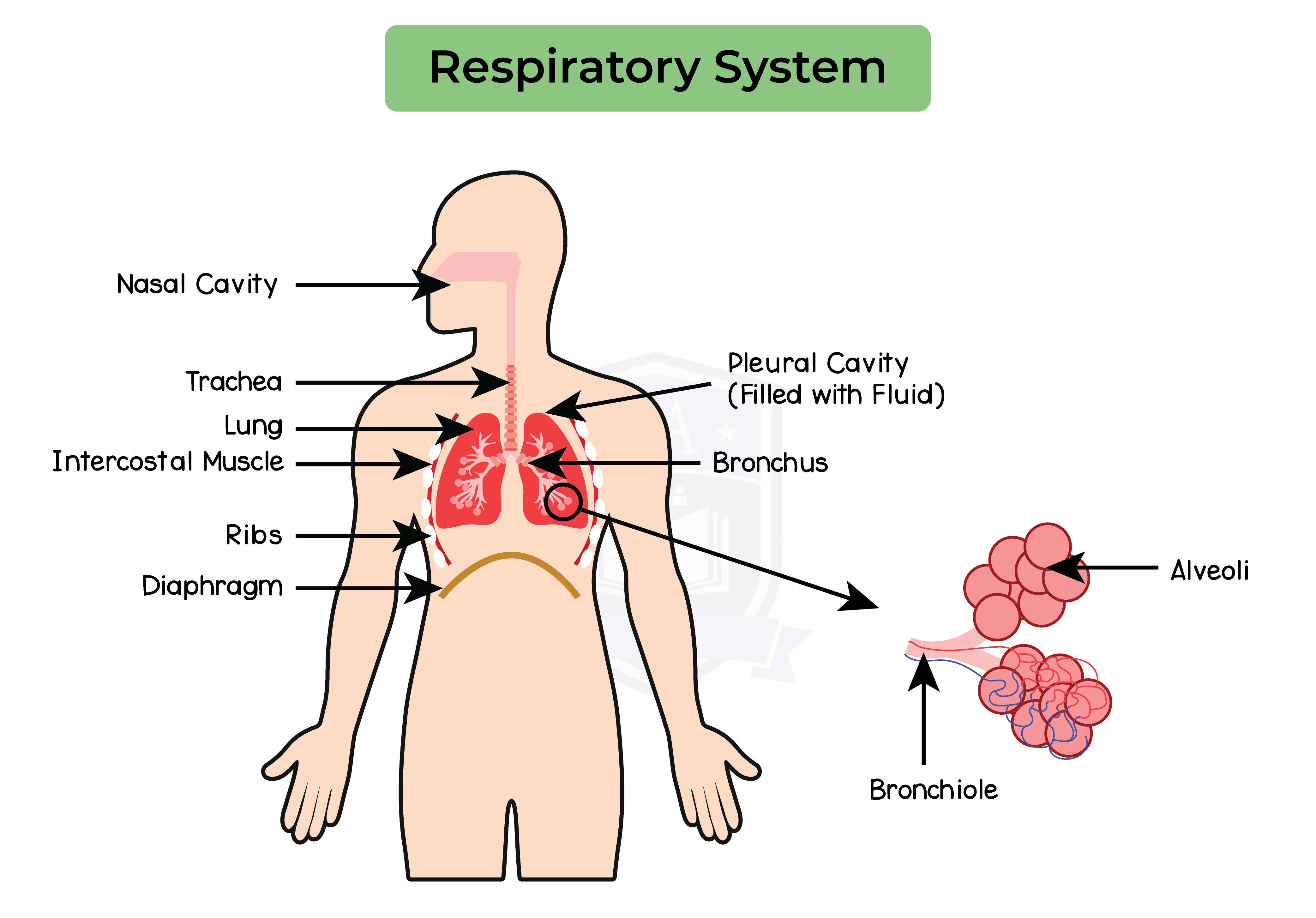
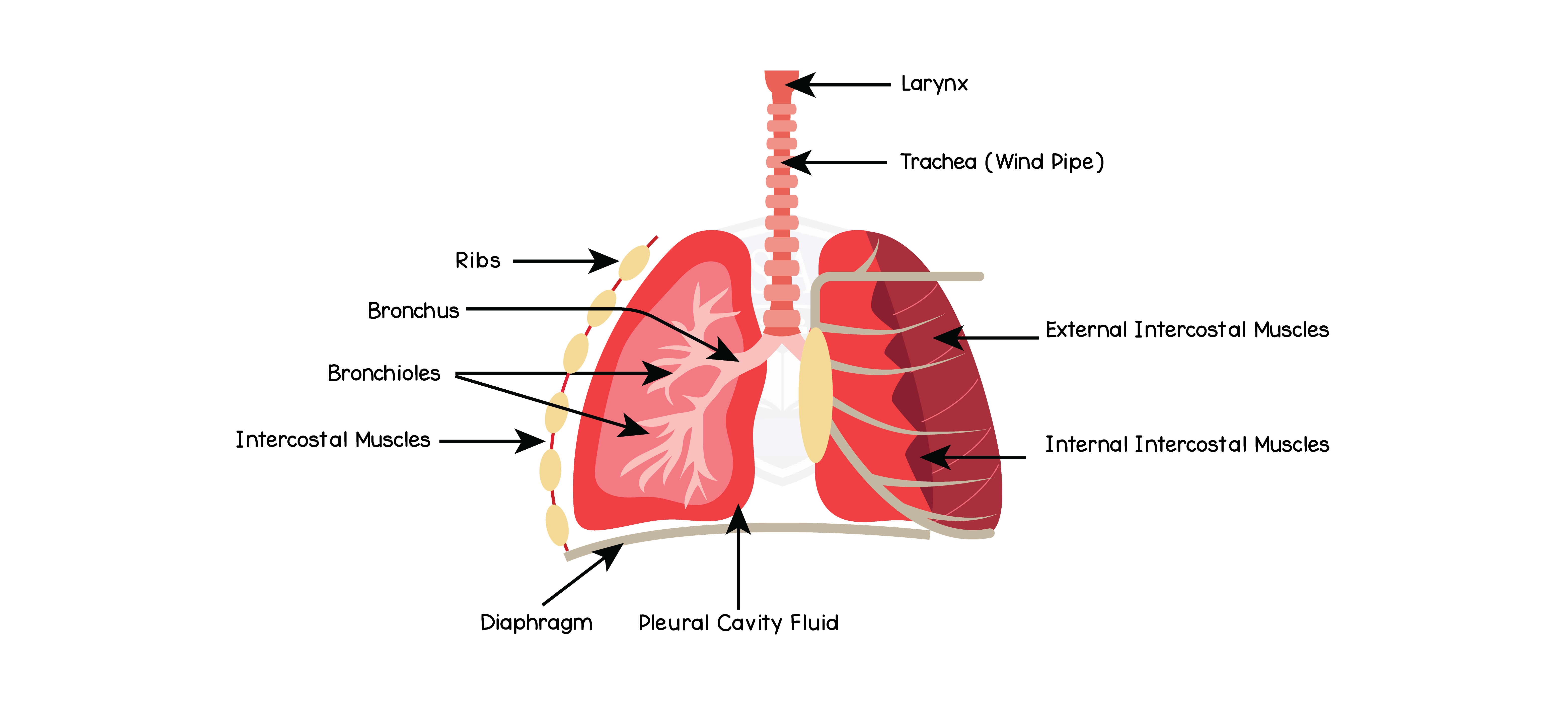
2.9.2 Understand the role of the intercostal muscles and the diaphragm in ventilation
2.9.3 Explain how alveoli are adapted for gas exchange by diffusion between air in the lungs and blood in capillaries
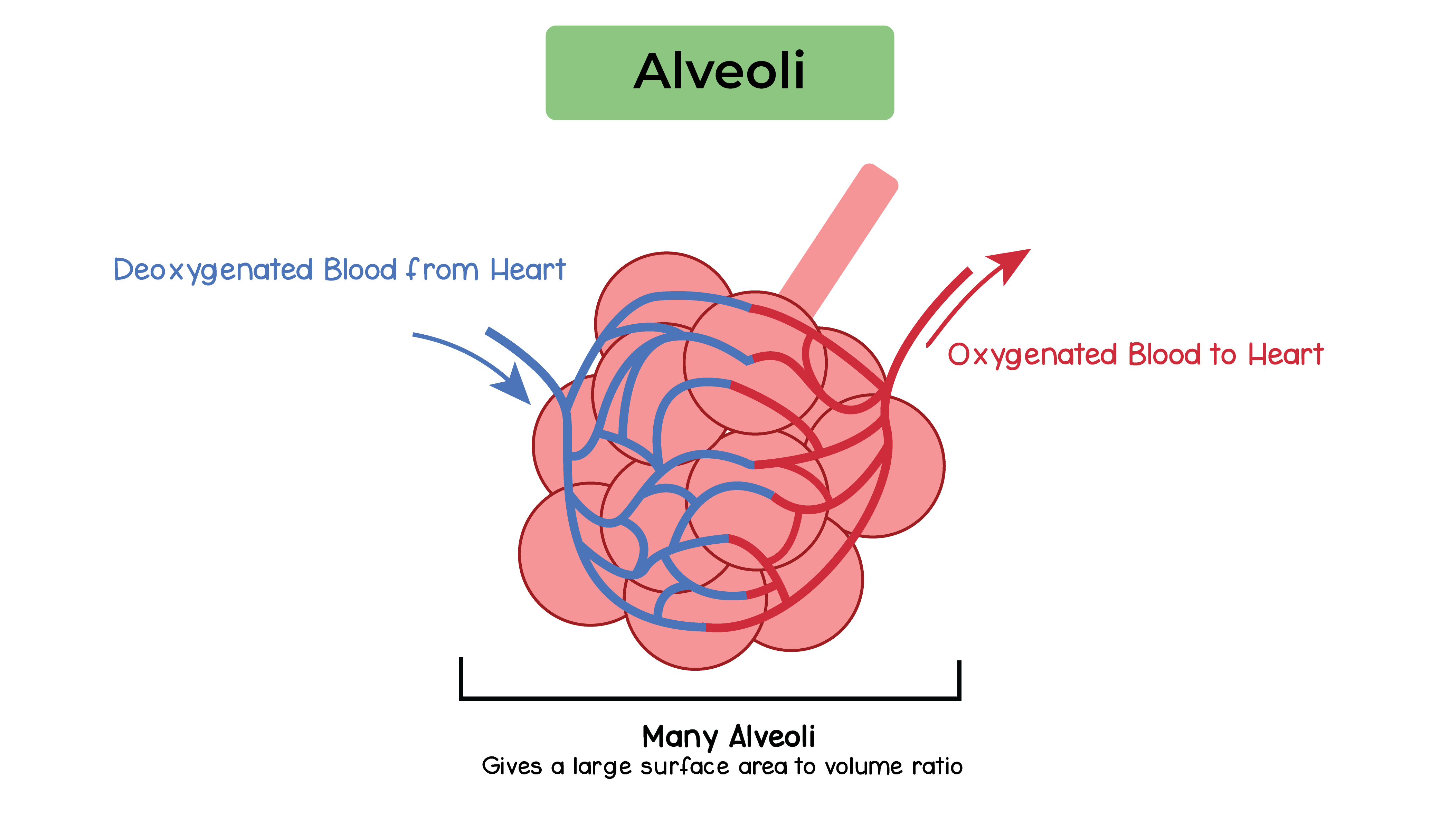
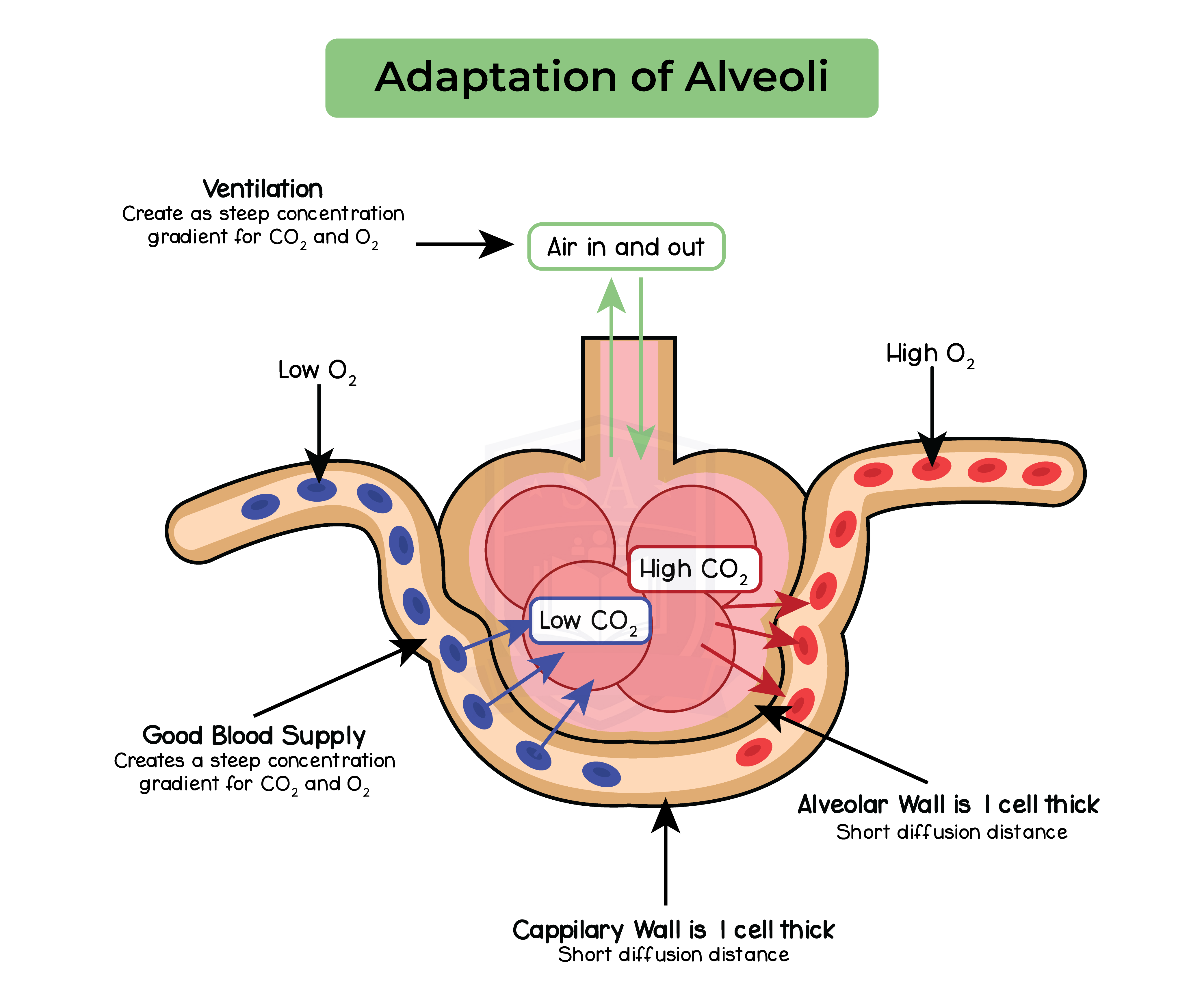
2.9.4 Understand the biological consequences of smoking in relation to the lungs and the circulatory system, including coronary heart disease
Smoking:
- Can lead to:
- Chronic obstructive lung disease (COPD)
- Coronary heart disease (CHD)
- Various cancers such as lung cancer
- Chemicals involved are:
- Nicotine – an addictive substance
- Tar – a carcinogen
- Carbon monoxide – reduces oxygen carrying capacity
Effects of nicotine:
- Narrows blood vessels
- Increases blood pressure and heart rate
- Can cause blood clots in the arteries leading to a heart attack or stroke
Effects of carbon monoxide:
- Binds irreversibly to haemoglobin
- Reduces oxygen carrying capacity
- May lead to increased blood pressure to compensate for low oxygen levels
- Increases the risk of CHD and stroke
Effects of tar:
- Carcinogen associated with increasing risk of lung cancer
- Can contribute to COPD
- chronic bronchitis and emphysema occur at the same time
- Chronic bronchitis caused by tar
- Emphysema caused by frequent infection in the lungs
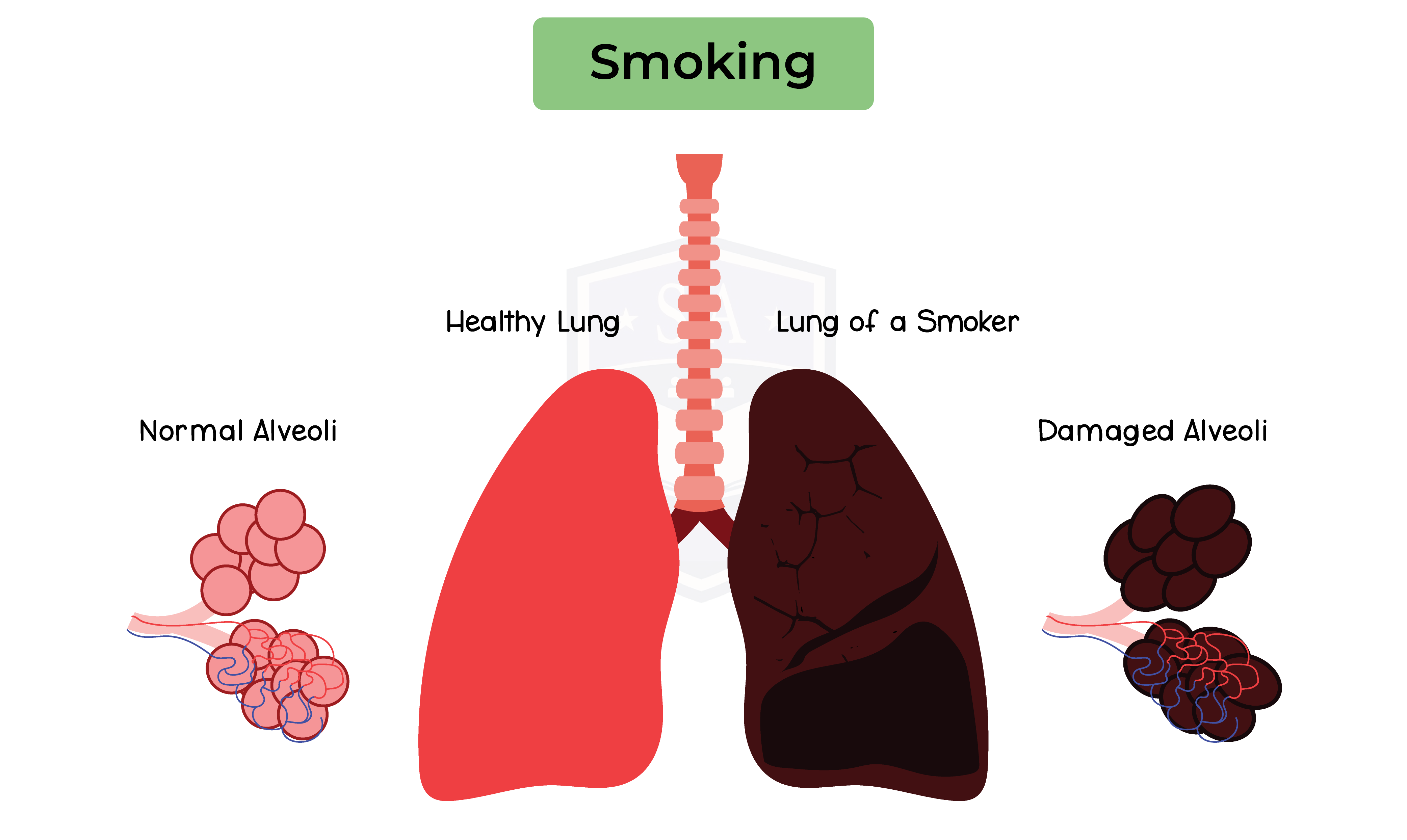
2.9.5 Practical: investigate breathing in humans, including the release of carbon dioxide and the effect of exercise
Method:
- Measure the breathing rate at rest of 3 students by:
- Counting the number of breaths for 30 seconds and multiply by 2
- Repeat test 3 times to calculate an average for each student
- Student should then run for 5 mins
- Immediately post exercise count the number of breaths for 30 seconds and multiply by 2
- Repeat step 3 every minute post exercise for 5 mins
- Calculate change in breathing frequency for each student
Results:
- Breathing frequency increases during exercise
- Muscles work harder and respire more
- Muscles need more oxygen to meet energy demand
- If energy demand is not met, they respire anaerobically
- Lactic acid can be created as a by product
- Post exercise, breathing frequency remains high for a while
- Lactic acid builds up during exercise
- Oxygen is required for lactic acid removal
- It takes time for breathing rate to return to normal post exercise
- The greater the oxygen debt, the more time it takes for breathing rate to normalise
Breathing rate and fitness:
- Breath rate during and post exercise can indicate fitness level
- Unfit individuals have:
- High breathing rate at rest
- Rapid increase in breathing rate during exercise
- Longer recovery period
Limitations:
- Individuals of different sizes, fitness levels, ages and gender may have different resting breath rates
- Breathing rate can change very quickly post exercise so count the breathing rate as soon as possible
- Allow for long breaks to obtain more accurate data in repeat experiments
